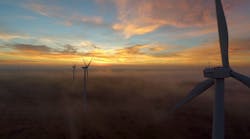The American Clean Energy and Security Act of 2009 was passed by the House of Representatives on June 26 with a vote of 219-212. Passage of the bill, also known as H.R. 2454 or the Waxman-Markey bill, after its primary sponsors, Henry Waxman (D-Calif.) and Edward Markey (D-Mass.), has caused a considerable stir across the political spectrum, in the press and online, primarily over its cost and its creation of a cap-and-trade system for carbon-dioxide emissions. But the bill is also loaded with provisions for improving energy efficiency that will significantly impact the electrical industry.
The debate moves next to the Senate, where the Energy and Natural Resources Committee last month reported out the American Clean Energy Leadership Act, which will proceed to a vote by the full Senate, probably in October, but possibly earlier, said Kyle Pitsor, vice president of government relations for the National Electrical Manufacturers Association (NEMA), Rosslyn, Va.
The Senate energy bill does not include the climate change provisions that have been the subject of the hottest debate. The Senate will consider climate change in a separate bill because of its requirement of 60 votes to close debate on legislation, which may give the energy bill a greater chance of passing.
NEMA and the American Lighting Association, Dallas, have been active in helping to shape both pieces of legislation, addressing Congress in hearings and working in coalitions with environmental organizations, energy-efficiency advocates, utilities and building owners, among others, to inform Senators and Representatives about the needs and opportunities for reducing electricity consumption and enhancing energy security.
NEMA's top priorities regarding these bills include provisions to expand the nation's electric power transmission systems, to establish nationwide renewable energy portfolio standards, to promote the use of energy efficiency building codes and to promote energy-efficient upgrades among manufacturing companies. The goal is to help move the nation toward greater efficiency without disrupting the market, said Pitsor.
“Our members are leaders in energy solutions, and have been proactive in identifying where there are products and technologies that can be obsoleted in favor of more energy-efficient solutions,” Pitsor said. “The important part is that we need to do that in a timeframe where there's a proper phasing so it doesn't cause significant market disruption, and that there's no loss of utility for the end user as a result of the transition.”
Among the provisions that will directly affect the electrical products industry, the Senate bill includes new federal energy-efficiency standards for portable light fixtures and certain incandescent reflector lamps that had been exempted from previous legislation.
The Senate bill includes financing mechanisms to encourage small and medium-sized manufacturers to upgrade the efficiency of their facilities and production processes through adoption of more efficient technologies and processes. This includes a $350 million fund to offer a direct rebate for replacing old electric motors with NEMA premium-rated motors and funding for studies on the benefits of variable-speed drives.
Both bills would make sweeping changes in the nation's production and use of electricity. They would create a nationwide standard for renewable sources of electric power. The Senate bill mandates that sellers of electricity obtain 15 percent of their electricity from renewable sources by 2020, whereas in the House, Waxman-Markey mandates an increase to 17 percent by that year.
“NEMA has been a supporter of a diverse range of energy sources for many years, and renewables are part of that. By deploying new technologies in the renewable areas of wind and solar, we can have homegrown energy and not be so reliant on imported energy,” Pitsor said. “Twenty-eight states have established their own renewable energy portfolios, but in some states there are more opportunities for renewable power generation than in others, due to geography. This bill will allow all the states to take part in the expansion of renewables.”
A key aspect of the bills for the electrical industry is a mandate for the Federal Energy Regulatory Commission (FERC) to develop an interconnection-wide transmission plan. Upgrading the nation's transmission system is a critical part of the push for a smart grid and the inclusion of renewable sources into the energy mix. Those upgrades are frequently thwarted by conflict and reluctance among the various public utility commissions and landowners near the transmission route. The bills would give FERC the power to step in to resolve issues over the siting of transmission infrastructure and ease efforts to develop systems for carrying power from wind, solar and other renewable generation facilities to the population centers that are the primary users. The bills would also promote distributed power generation by directing FERC to establish a national interconnection standard for small production facilities (15 kW or less).
The legislation would expand the influence of energy-efficient products through changes to building codes. The Senate bill directs the Department of Energy (DOE) to work with building code organizations to develop commercial and residential model building codes with requirements for efficiency improvements rising to 50 percent after 2016.
“NEMA has a high-performance buildings initiative for promoting the use of energy-efficient products in buildings, ranging from demand response to lighting controls, energy-efficient lighting systems, better distribution systems and so on. The building code provisions that are contained in here will help incent the use of more energy -efficient systems in new buildings and, we hope, in retrofit buildings,” Pitsor said.
A NEMA press release also highlighted provisions that would:
-
Create a Clean Energy Investment Fund that would provide various types of credit to support deployment of clean energy technologies, including loans and loan guarantees.
-
Establish federal energy efficiency standards for portable light fixtures (table and floor lamps) and direct the Department of Energy (DOE) to set standards for certain incandescent reflector lamps.
-
Direct DOE to complete studies on compliance with federal efficiency standards; the costs and benefits of requiring direct-current lines in buildings; and conduct a market assessment of electric motors, drives, controls and recommendations on improving deployment of these technologies.
-
Increase funding assistance from DOE to the states for code compliance, training, and technical analysis; states would be required to certify to DOE if they have achieved compliance with building codes.
-
Authorize competitive grants to states to carry out retrofit programs for residential and commercial building upgrading.
According to Pitsor, there are still provisions NEMA and its allies are hoping to get added to the Senate bill as amendments before or during debate in the full chamber in September or October. Among these are potential energy-efficiency standards for outdoor lighting, including roadway, street, parking lot and area lighting.
Of course, the differences between the House and Senate bills will have to be worked out once they are passed by their respective chambers. The question of whether or not climate change provisions are combined with energy incentives in the final bill may determine whether climate change legislation will reach President Barack Obama's desk this year or not, said Pitsor.








